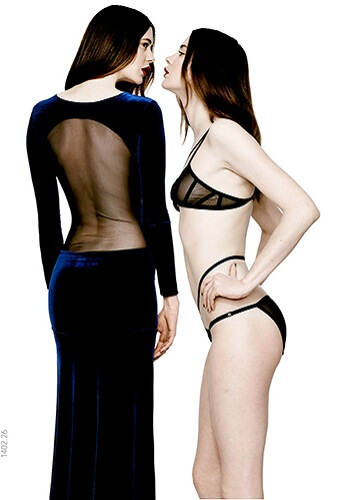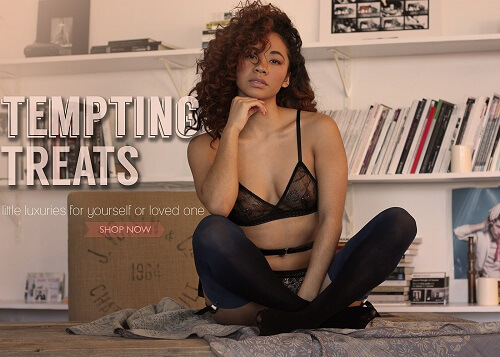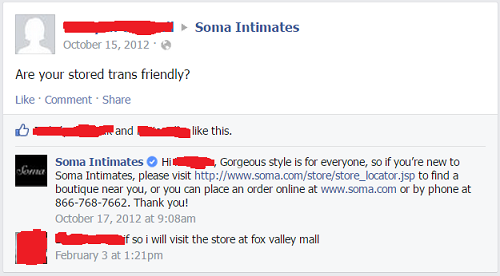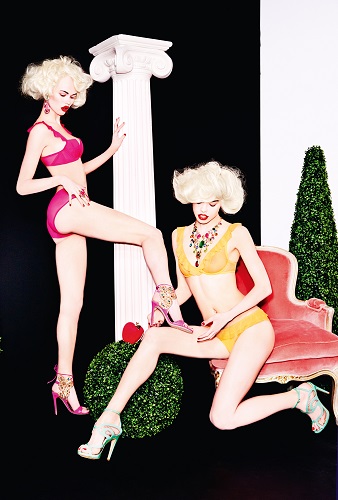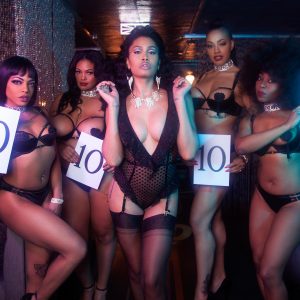How Lingerie Companies Can Serve Queer Customers
LGBTQ people often aren’t sure what to do about lingerie. When your gender or your presentation don’t match what’s widely available, it can be easy to get discouraged and not buy much at all, especially if you feel that businesses aren’t interested in selling to you.
I’ve recently spoken to a few businesses who are hoping to expand their target market to include queer and trans customers, which is great! I’ve also heard from some companies who are exceptionally resistant to the idea of expanding their target market.
In this comment thread, Brent Krause of Homme Mystere talks about why he isn’t interested in selling to trans women, saying that he doesn’t know the market and that it would be unfair of him to try and sell to people he doesn’t understand.
Let me say this: part of being a businessperson includes researching target demographics that are not part of your own experience. This doesn’t mean having to be all things to all people, but it does mean considering the possibility that your product might be something a queer or trans person would want.
Being more queer-friendly can be as simple and inexpensive as altering some of the language you use to sell your product, and the benefits can include a larger audience and a contribution to the safety and wellbeing of queer and trans people.
Want to support queer and trans people in your lingerie business? Want to expand your customer base while helping a marginalized group? Here’s how you do it, ranging from smaller, easier solutions to broad-reaching ones.
1. Limit your use of gendered language in your marketing materials.
If your website says “surprise your man” in big letters on an ad featuring sexy lingerie on a woman, you’re telegraphing that the default partner is a man. Therefore you're implying your preferred customer is a straight woman trying to impress a male partner.
It’d be easy enough to say “surprise your lover” instead -- who doesn’t like surprising their lover? This idea can easily be extended to trans and genderqueer people; why assume you know the gender of the person buying either the lace bra or the boxer briefs?
If you’re not interested in removing gendered language entirely from your site, try to avoid it specifically on products that would be likely to be bought by trans customers. Let me give an example: if you sell a sports bra that’s famous for being the best compression bra on the market, chances are some of your customers for that product are going to be trans men or genderqueer folks who are using it to bind their chests. Saying “for the person who needs extra compression” instead of “for the woman who needs extra compression” doesn’t change the nature of the product description at all, but could make a huge difference for a guy looking at that ad and wondering if your product is for him.
2. If you have a brick-and-mortar store, have a clear-cut trans inclusivity policy and stick with it.
If you’re a retailer and people are coming to you for fittings, it’s important that trans customers feel safe and welcomed. Even if you would personally never ask a trans customer to leave your store and are convinced that your employees feel the same, communicate this explicitly and clearly. Be ready to answer their questions, if any, about this policy. And for goodness’ sake, if you also have a website, post your policy there.
When I helped a friend shop for lingerie we checked websites and social media to see if the stores had clear policies, because it’s just easier and more comfortable for everyone if we know what to expect. Hopefully someday being trans-inclusive will be the unspoken default, but until then, declare yourself open for business.
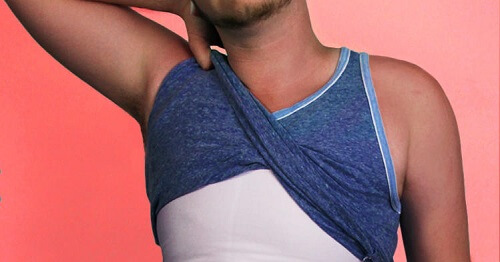
This binder company used to just cater to cisgender men with gynecomastia. Now they have a trans cutie modeling their binders. Go see the whole gallery! Via GC2B.
3. Include queer and trans people in your advertisements, and treat them like people, not like props.
I wrote about this earlier this month, and talked about it here as well: representation matters. It’s important to be able to see yourself in media, especially if you’re going to be buying a product. The Lingerie Lesbian has spoken about this too: queer people are often represented as two-dimensional, either as titillating sex objects or freaky villains. Put an ad up where we are just people, hanging out, being awesome (and looking good in your product) and you’ll have a fan base.
Some suggestions for how to portray us: consider hiring actual queer models, and check out the brands I featured earlier that are doing it right. You'll notice that a queer-friendly ad includes people of the same sex enjoying each other's company, not looking embarrassed or hurt, and ideally not staring directly at the viewer as though asking "are you titillated yet?"
4. Make it a practice to hire LGBTQ people.
If you are wondering why you’ve never considered these things before, it might be because you don’t have any openly queer people on your staff at your company (which would be a shame: we are great.) Don’t worry, you can fix this by making it clear that you are interested in hiring, training, and supporting LGBTQ employees.
Hiring LGBTQ people will also be great for helping you with your queer ads. Surprisingly enough, people's creative work tends to reflect their lived experience, and queer photographers and models tend to produce really great queer images. For an amazing example, look at Ellen Von Unwerth's fashion photography.
It might seem strange to consciously seek out diversity, but I'm not suggesting hiring unqualified candidates. Encouraging diversity can be as simple as stating that you're open to LGBTQ employees. I wouldn’t have ended up working for The Lingerie Addict if Ms. Harrington hadn’t put out a call for diverse bloggers, because I felt like my perspective on lingerie was so far out of the mainstream that it wouldn’t be wanted. A lot of people are ruling themselves out of the lingerie world on the employment end and the customer end because they feel like it doesn’t have a place for them.
5. Do it sooner -- don’t wait until the perfect moment.
I’ve heard people say “I’m working on queer representation in my brand! I just want to make sure it’s perfect before I put it out there. I don’t want to contribute to the problem.”
I think this is an admirable instinct, but I am worried about how it plays out in practice. Why? Because nothing is ever perfect, and holding queer media to an incredibly high standard is making it harder for you to just do it.
You don’t need to represent every facet of queerness in one ad. You don’t need to strip out every gendered pronoun in a single swoop. If you’re worried about adding queer representation to your brand, don’t subject it to endless rounds of scrutiny in your own head: have a few other people (including some queer people) look it over, and then put it out there.
Be ready for feedback. You won't be perfect at serving a new audience at first, and listening is paramount. Asking you to change something slightly isn’t the same as throwing you under the bus, it’s part of being a conscious member of a community. Nobody is above constructive criticism, but also no criticism can erase the good work you've done already. If you're putting out thoughtful content and responding to feedback, we're going to be so glad to have you.
Queer readers: what did I leave out? Lingerie companies: what questions do you have about supporting queer customers? Come unpack these issues with me in the comments!





